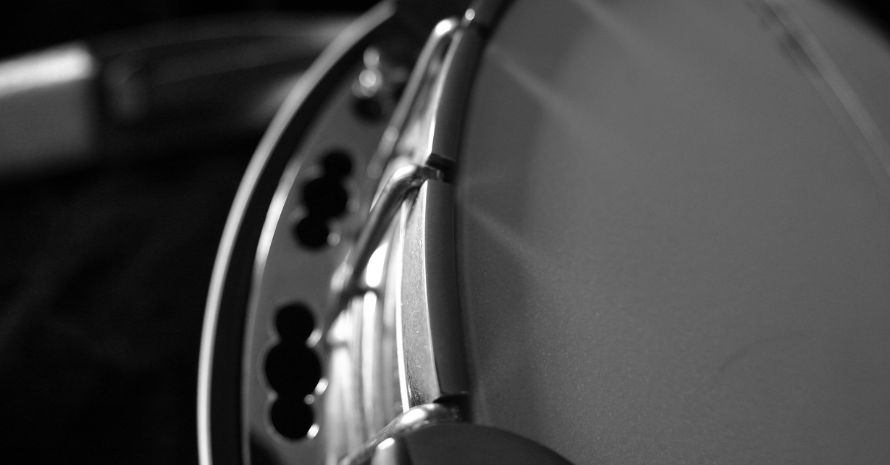Banjo Heads are custom made to fit a banjo’s drum. They are made of animal skin or synthetic material and have a frame that holds them in place. Here are a few tips on how to measure a banjo head.
How to measure banjo head?
Here’s a list of tools you will need to measure a banjo head:
- A ruler;
- A marker;
- A tape measure;
- A pen;
- An inch-calculator.
What banjo head crown height do I need?
It can depend on the tension you want on the head. A lower crown height will result in less tension. If you are not sure, it is always best to start with a lower crown height and work your way up until you find the tension that is right for you. You can measure the crown height of the head by measuring from the outside of the frame of the banjo head to the top of the middle of the drum.
How tight should a banjo head be?
The tighter the banjo head, the better the sound. Usually one finger will be enough to hold the string in place. If you can hold the string with 2 fingers, you should tighten it a little bit more. You can adjust the tightness by loosening or tightening the tension rod.
How do I properly measure my Banjo Drumhead?
Banjo heads can be measured same as drumheads. You can measure banjo head size, the diameter of the head (or rim) and the thickness. The diameter of the head should be measured right at the edge (rim). The thickness of the head is measured across the head. Banjo head collar height is measured from the edge of the drumhead to the center of the lug. This measurement is called collar height.
It is the combination of head diameter and collar height that determines the proper hole spacing. For example, a 14″ head with a 3/8″ collar height uses a “5/8-7/8” hole spacing. The “7/8” is the diameter of the hole. The “5/8” is the collar height.
How long does a banjo head last?
The average life span of a banjo head is about a year. Of course, it depends on materials and the amount of time you spend playing the banjo. Banjo heads are made of animal skin or synthetic material and have a frame that holds them in place. The animal skin banjos are usually made with calfskin, goatskin, or sheepskin and they last around 6 months with regular use. The synthetic banjo heads are made with Mylar or PVC and they last around a year with regular use. This can also vary with different banjo head sizes.
When should I replace my banjo head?
If you notice any cracks, rips, or tears in the banjo head, it is time to replace it. You should also replace the banjo head if you notice a change in the sound quality. Sometimes the sound can become dull and flat. If this happens, and you have already tried tightening or loosening the tension, then it might be time to get a new banjo head.
When replacing a banjo head, you should always make sure the banjo is tuned properly. If you don’t, you might find that your banjo is out of tune and you can’t get it back in tune.
If you are planning to replace the banjo head, you might want to wait until the end of the day so that the skin gets relaxed. You should never replace a banjo head in a hot room or in a room with direct sunlight. The skin will get stiff and it will be hard to stretch it. You should also not replace the banjo head if the temperature is below 55 degrees F.
FAQ
The banjo head is a thin, circular piece of material that is placed over the drum of the banjo. It is a vital component of the instrument and it serves to protect the drum. The banjo head is also responsible for making the sound of the banjo.
How do I clean my banjo head?
You should clean the banjo head carefully. You can do so with a dry cloth or a dry cloth moistened with a bit of water.
How do I replace my banjo head?
It depends on whether you have an animal skin banjo head or a synthetic banjo head.
For an animal skin banjo head, you will have to take off the old banjo head and then stretch the new banjo head. You should then use a tape measure to ensure that the banjo head is completely round.
For a synthetic banjo head, you will need to unbolt the frame, remove the old banjo head, and then align the new banjo head.
Is the banjo head important?
Yes. The banjo head is a crucial component of the banjo that you should never overlook. It is responsible for making the sound of the instrument. It also protects the drum of the banjo and it is easy to replace.
Conclusion
Banjo heads are custom made to fit a banjo’s drum. They are made of animal skin or synthetic material and have a frame that holds them in place. They are responsible for making the sound of the instrument.
There are a few tips on how to measure a banjo head. It can depend on the tension you want on the head. The tighter the head, the better the sound.
You should clean the banjo head carefully. You can do so with a dry cloth or a dry cloth moistened with a bit of water. You should also replace the banjo head if you notice a change in the sound quality.
Also read:

